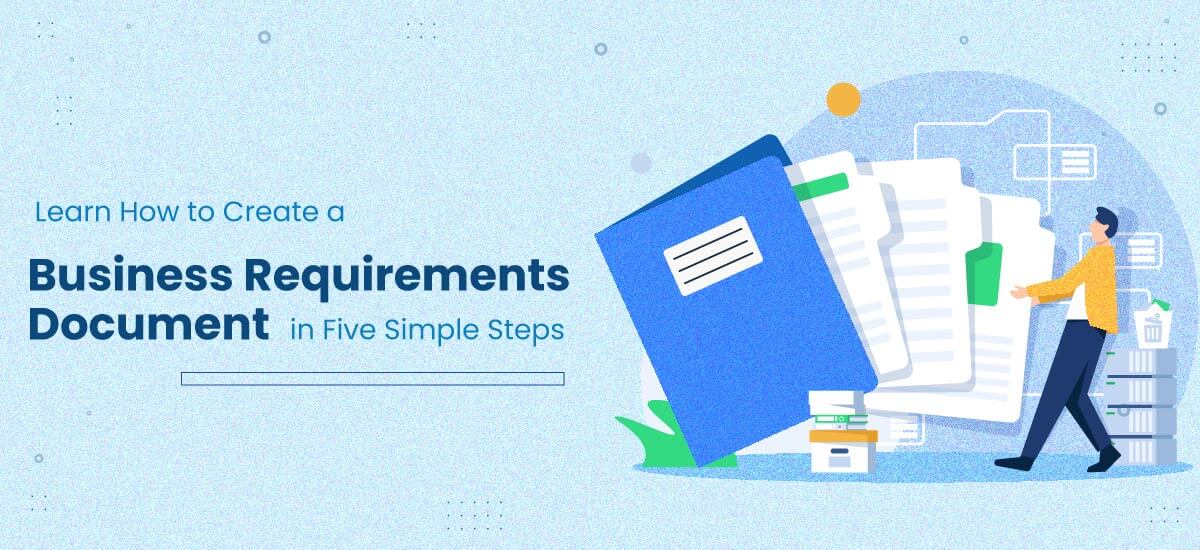Table of Contents
Are you planning to develop a new software system, implement a new process, or create a new product?
If so, you need to create a Business Requirements Document (BRD) to capture the essential features, functions, and constraints of the project.
But how do you create a BRD that meets the needs of your stakeholders, aligns with your goals, and guides your project team?
Don’t worry, we’ve got you covered!
What is Business Requirements Document?
A Business Requirements Document (BRD) is a crucial document in any project that involves developing a new product, service, or process. It outlines the project’s scope, goals, constraints, and functional and non-functional requirements. Creating a BRD is essential to ensure that everyone involved in the project understands its objectives and requirements and is on the same page.
In this blog post, we will guide you through five simple steps to create an effective BRD.
How to Create Business Requirements Document?
Step 1: Define the Project Scope
Defining the project scope is the first step in creating a BRD. It helps in establishing the project’s boundaries, objectives, assumptions, and deliverables. You need to create a SMART criteria-based definition that is Specific, Measurable, Achievable, Relevant, and Time-bound. It’s best to use context diagrams, scope statements, and user stories to create a comprehensive scope definition.
Step 2: Identify the Stakeholders
Identifying stakeholders is crucial as it helps in prioritizing their requirements, analyzing their interests, and addressing their concerns. You should start by creating a stakeholder map that includes all stakeholders and their level of influence and interest in the project. Additionally, creating stakeholder personas and conducting surveys can provide valuable insights into their needs and expectations.
Step 3: Gather Requirements
Gathering requirements involves collecting and analyzing functional, non-functional, and business requirements. You can use various techniques such as interviews, workshops, surveys, and use cases to gather requirements. It’s essential to document the requirements in a structured and organized manner. You can use project management templates, tables, diagrams, and narratives to make sure that requirements are well-defined, clear, and unambiguous.
Step 4: Prioritize Requirements
Prioritizing requirements is important as it helps in focusing on the most critical requirements first and allocating resources accordingly. You can use various prioritization techniques such as MoSCoW (Must-have, Should-have, Could-have, and Won’t-have), Kano model, and ROI-based prioritization to prioritize requirements. It’s essential to involve stakeholders in prioritizing the requirements and communicate the priorities to the project team.
Step 5: Document Requirements
Documenting requirements involves structuring, formatting, and presenting the requirements in a BRD. The document should be organized into sections such as executive summary, project overview, scope, requirements, assumptions, constraints, and acceptance criteria. It’s important to use diagrams, tables, and narratives to make the document easy to read and understand. Additionally, you should review and approve the document with stakeholders and project team members.
Project Management Tool Helps You Track Business Requirements
Yes, project management software can help you track business requirements throughout the project lifecycle. With the project management tool, you can create a Business Requirements Document (BRD) and store it in a centralized location where all team members can access it. You can also use task management features to create tasks related to the business requirements and assign them to team members.
Project management tool’s Gantt chart view allows you to visualize the project schedule and track progress against the business requirements. You can use the Gantt chart to identify any potential delays or roadblocks and take corrective action before they impact the project’s success.
Project management tool also allows you to create custom reports to track project metrics related to the business requirements. You can create reports on progress against the requirements, project budget, and resource utilization.
Finally, project management tool’s collaboration features allow team members to communicate and collaborate on the business requirements in real-time. Team members can leave comments, attach files, and tag each other to ensure everyone is on the same page.
Try Yoroproject
Some of the key features of Yoroproject include:
- Task Management: Yoroproject allows you to create and assign tasks, set due dates, and track progress.
- Gantt Charts: Yoroproject offers Gantt charts that allow you to visualize project schedules and dependencies, and track progress against timelines.
- Resource Management: Yoroproject helps you manage resources by allowing you to allocate resources to tasks, track availability, and manage workloads.
- Time Tracking: Yoroproject allows you to track time spent on tasks, which is helpful for tracking project workflows, costs and invoicing clients.
- Collaboration: Yoroproject offers collaboration features that allow team members to communicate and collaborate in real-time, share files, and leave comments.
- Reporting: Yoroproject offers a range of customizable reports that provide real-time project data and insights, including Gantt chart reports, task reports, and resource utilization reports.
- Project Templates: Yoroproject offers pre-built project templates that you can use to quickly set up and manage your projects.
- Mobile App: Yoroproject has a mobile app that allows you to manage your projects on the go, view tasks and timelines, and track time.
- Integrations: Yoroproject integrates with a wide range of other tools, including Google Drive, Slack, etc.
Conclusion
Creating a Business Requirements Document is a critical step in any project that aims to deliver value to the stakeholders, sponsors, and users.
By following the five essential steps of BRD creation, using the best practices and tips for each step, and avoiding the common mistakes and pitfalls, you can create a high-quality, effective, and useful BRD that meets your project’s goals and expectations.
Moreover, by using the project management tools and templates of BRDs and online resources, you can save time, reduce errors, and improve collaboration in your BRD creation process.




